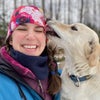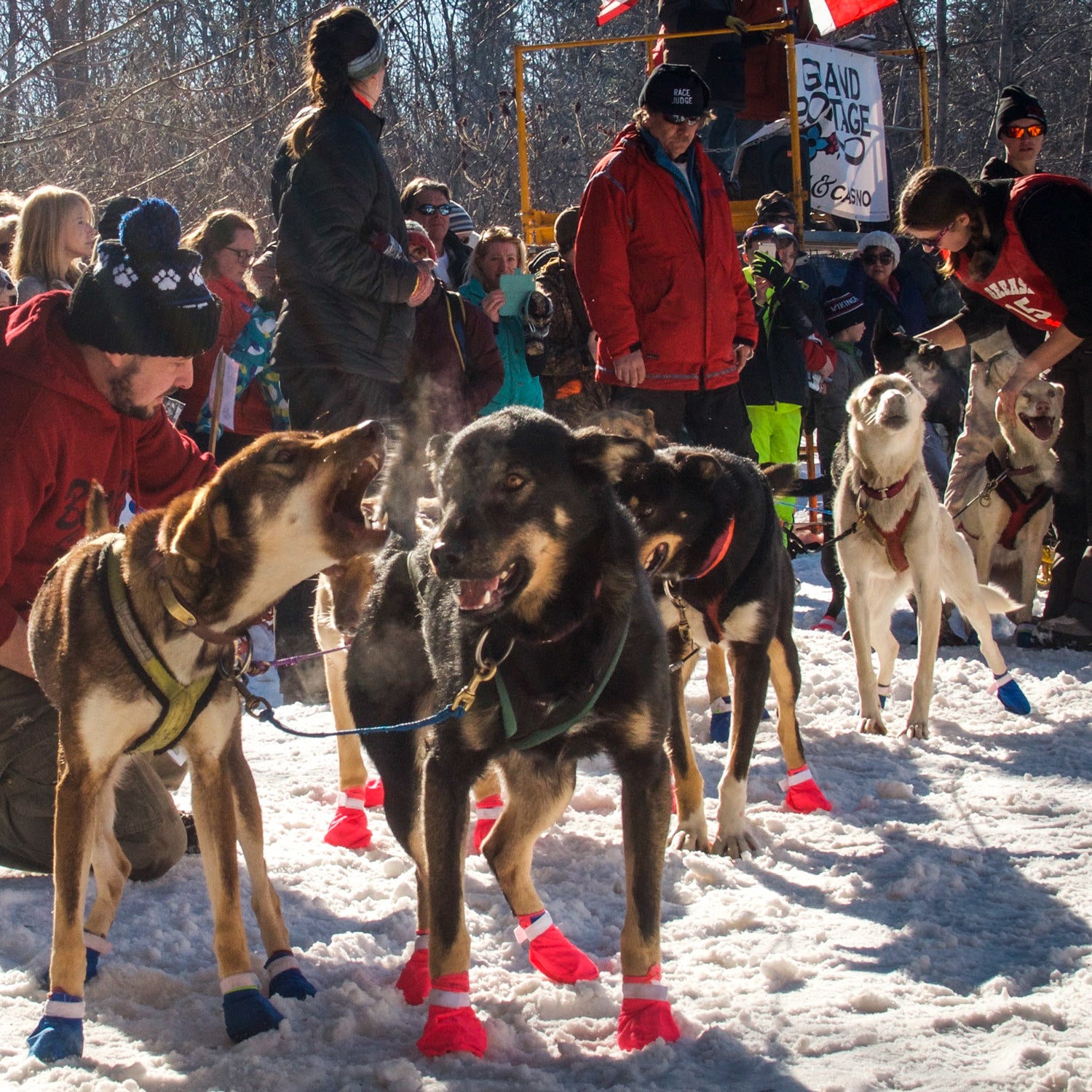Last year, my lead dog Brewtus—a meaty if circumspect three-year-old—learned how to make U-turns. This was a disaster. In the past, when Brewtus reached a fallen tree or open water on the trail, he would gaze mournfully over his shoulder at me until he understood how I wanted him to get through. Then, one day, when the team stopped before a mass of fallen branches, Brewtus had an epiphany. What if he didn’t find a way to continue? What if he just turned around?
From then on, whenever Brewtus spotted trouble, he made the executive decision to head for the hills and take the rest of the dog team with him. His strategy peaked during last year’s 120-mile . My team was the first on the trail. We came to a fork within a mile of the starting line, and when I slowed to check the map, Brewtus took it upon himself to whip the team around and lead us directly back toward the start, where hundreds of fans cheered beside a grand archway. We passed three other teams head-on before I was able to get my eight dogs facing the right direction. “Don’t worry!” I called to the spectators, “we’re fine!” Even though clearly we were not.
It has taken a lot of practice to break Brewtus of his habit, and he’s not quite there yet, but he’s doing much better. Last fall, we sent him home with our friend Ryan Redington to give Brewtus a chance to try out for Ryan’s 2017 team. It was hard to part with Brewtus, even temporarily, but exciting to think of him running the Iditarod, a 1,000-mile race across Alaska—especially because then, if I enter the Iditarod in a few years, I’ll have a lead dog who already knows the route.
Since the Great Brew-Turn Fiasco of 2016, I’ve learned that dog teams, and especially lead dogs, should never realize that turning around is an option. If the team turns left when they should have turned right, it’s better to run ten miles out of your way than ask them to U-turn. Sled dogs are naturally forward-oriented, as champion musher Mitch Seavey calls it, and this inclination is a fragile gift that guides their outlook through the toughest terrain. No matter where the dogs are, there is only one direction, and it is forward. No matter what they face, there is only one way, and it is through.
I’m learning this, too.
Three years ago, abruptly, my body stopped working. I was diagnosed with a co-infection of anaplasmosis and Lyme disease, tick-borne illnesses that I’d likely caught while hiking in Minnesota’s Sawtooth Mountains. For months, I had trouble standing to get a glass of water, and for months later walking to the mailbox, and I grew physically limited in ways that still surprise me and shape my daily life. At the same time, I slid into an anxious depression: I was scared that nobody believed how sick I was and not even sure I believed it myself. In my worst moments, when I thought I’d never feel strong again, my husband—well, now he’s my husband, because we eloped to a Las Vegas drive-thru right after the election, grasping for stability—would press his hand over my heart. “We’re forward-oriented sled dogs,” he’d say, and then we’d laugh because we totally �ɱ�����’t, like so totally �ɱ�����’t that we named our Fantasy Iditarod team the Anchorage U-Turn Hounds.
Anyway, that’s what he’d tell me, my secret husband, and it helped. Dogs carry wounds, but they don’t carry the past.
Brewtus sprained his wrist during a key week in his Iditarod training and missed a few runs, and just like that he was out of the running for Ryan’s team. We picked him up at this year’s , a two-day event in the hills above frozen Lake Superior. He’s fat and very happy, and we’re happy to be with him again.
Although it’s four hours away, the Apostle Islands race feels like our hometown event. It’s the first race I ever entered and the first race I ever won. This year, I gave the keynote, and our dog Donut was on the poster looking fly, her pink nose plastered in the window of every gift shop and bookstore in that big-hearted vacation town.
On the second day of the race, something strange happened. The dogs and I had run a solid 25 miles, passed the cheering volunteers at the halfway checkpoint with their cameras and hot dogs and high-fives, looped up through the hills, and headed onto a circuitous route back down toward that big frozen water. The morning had been breezy, but now a brilliant sun lit the blue sky and striped the trail with cheerful shadows, and every dog had settled into a nice lope, the miles rolling under us, 16 ears bouncing in occasional unison. I had a nasty cold and kept sneezing, but even that was somehow funny, quaint in the face of the bright wilderness. The sled was slick and powerful on every turn, and I felt strong driving it. And this is mysterious, something I haven’t spoken aloud, but it felt like something that had been loose for a long time clicked back into place behind my eyes. Just like that, I was myself in a way I hadn’t felt in a long time. I woke up on the trail, and now I’m home.
Blair Braverman () is the author of . This is her third of four columns about raising a sled dog team.


